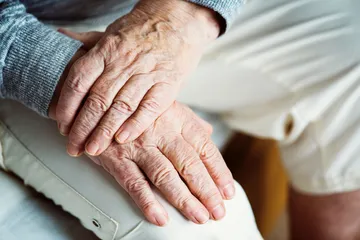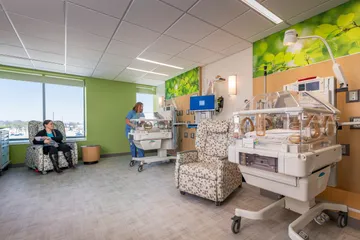More than 30% of people over the age of 70 have some form of memory loss, while it is estimated that every 65 seconds someone in the United States develops some form of dementia. Given these staggering statistics, it is vital to research ways to increase the quality of life for persons with memory loss. An increasing amount of research exists today shows making modifications to the interior environment results in a positive impact on outcomes such as behavior, cognitive performance, function, well-being, social abilities, orientation, and care outcomes (Marquardt, 2014; Ziesel, Silverstein, Hyde, Levkoff, 2013; Pati, 2011; Stichler, 2010). As architects and designers, it becomes imperative to create the best conditions around people with memory loss, to enable them to live their life by maximizing their capabilities, to actively continue to be part of society, enhancing their self-esteem and independence.
According to the Dementia Training Study Centre in Australia, a pioneering organization focused on dementia education and training worldwide, ten key principles that define an appropriate physical environment for people with dementia are the following:
- Unobtrusively reduce risk
- Provide a human scale
- Allow people to see and be seen
- Minimize unhelpful stimulation
- Optimize helpful stimulation
- Support movement and engagement
- Create a familiar space
- Provide opportunities to be alone or with others
- Provide links with the community
- Respond to a vision for way of life
As it relates to the interior environment, the ten key principles are supported by providing environmental cues, enabling a homelike atmosphere, ensuring color and patterns have appropriate contrast, and controlling appropriate lighting, noise and air quality sources.
It is clear from the research evidence that lighting design for people with dementia is the most important and promising in terms of improving health and the quality of life. The best-known benefits of lighting are visual and this has led to the prevention of falls (Marquardt, 2014; Calkins, 2009). A number of studies have indicated that bright light therapy in public areas has been found to improve sleeping patterns and the circadian rhythms of people with dementia and led to less agitated behaviors (Nowak & Davis, 2011; Riemersma-van der Lek et al., 2008). Of all the senses, hearing is the one that has the most significant impact on people with dementia in terms of quality of life. It is important to examine the types of surfaces and materials in the care setting in terms of noise absorption. There is strong evidence showing a relationship between high noise levels and unwanted behavior, while pleasant sounds of music (such as recorded songs of birds, the sounds of other small animals, sounds of babbling brooks) were found to be positively stimulating. The sense of smell often seems to have a strong hold on human emotions and memory. Providing olfactory cues can serve as orientation aids, while exposing people to cooking smells has led to improved appetite and food intake (Algase et al., 2010; Cohen-Mansfield & Werner, 1995).
Providing environmental cues through a clear distinction between private, semi-private, and public spaces can enhance personal orientation and independence. Throughout the space, art work, plants, ornaments, and photographs should all be placed at strategic spots to attract people with dementia’s attention and provide clues for orientation. Providing a home-like environment can aid in orientation by increasing the sense of familiarity towards everyday life (Gramegna & Biamonti, 2017). Home-like features can include a fireplace to recreate social rituals, large windows with interesting views of activities, can also include soft furnishing that help in noise absorption. Providing high contrast between doors and walls, between the plate and the table or place setting has led individuals to become more independent with mobility and meals (Calkins, 2009).
Kahler Slater incorporates the latest research and Evidence Based Design into all of our client’s projects. Click here to see our latest work in environments for older aged adults or visit us at the Elder Care Conference on September 6-7, 2018 in Charlottesville, VA.


